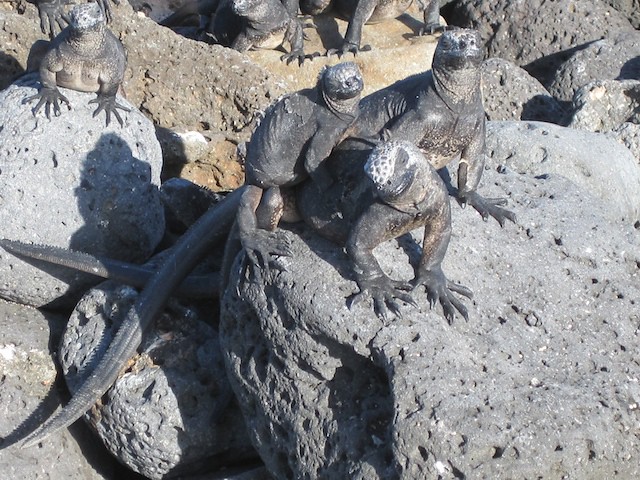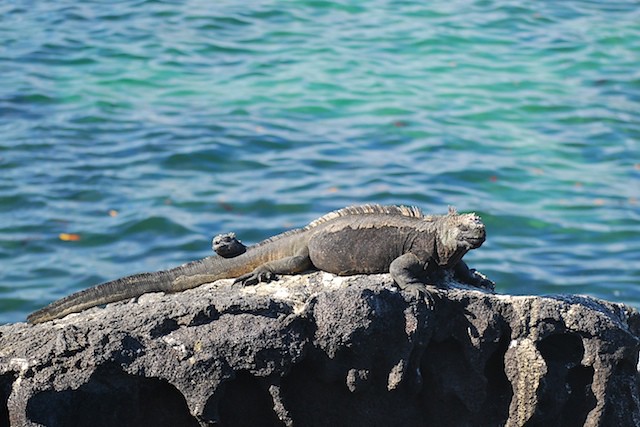
 I'm fascinated by the description of marine iguanas as "imps of darkness," a term first used in the Voyage of H. M. S. Blonde to the Sandwich Islands, in the years 1824-1825 by Captain the Right Hon. Lord Byron, Commander. During his voyage to Hawaii (the Sandwich Islands) he stopped in Galapagos, where he saw these unique creatures that are found only here.
I'm fascinated by the description of marine iguanas as "imps of darkness," a term first used in the Voyage of H. M. S. Blonde to the Sandwich Islands, in the years 1824-1825 by Captain the Right Hon. Lord Byron, Commander. During his voyage to Hawaii (the Sandwich Islands) he stopped in Galapagos, where he saw these unique creatures that are found only here.The term was adopted by Darwin, who mentions having read it somewhere, and then uses it. We saw them on almost every beach, on rock, sand, and concrete jetties. I find the choice of words completely vivid, as they reminded me of medieval demons or the imps in Grimm's Fairy Tales or the imp shown, from Celtic fairy tales.
Here is the passage that describes these creatures and their environment:
Our party to Narborough Island landed among an innumberable host of sea-guanas, the ugliest living creatures we ever beheld.
They are like the alligator, but with a more hideous head, and of a dirty sooty black colour, and sat on the black lava rocks like so many imps of darkness. As far as the eye could reach we saw nothing but rough fields of lava, that seemed to have hardened while the force of the wind had been rippling its liquid surface. In some places we could fancy the fiery sea had been only gently agitated; in others, it seemed as if it had been swept into huge waves. Here and there it was rent into deep crevices coated with iron rust, and filled up with salt water. Far inland too, the pools are salt; and not a vegetable, but the cactus here and there, is seen to root in the rock. Seaward, however, the eye is relieved by a few patches of mangrove, which have begun to fringe the desolate place with green. [Reproduced here.]

I also found this interesting use of the term: "Trolls were always imps of darkness. They are descended from the Jotuns, or Frost-Giants of Northern paganism, and they correspond to the Panis, or night-demons of the Veda. In many Norse tales they are said to burst when they see the risen sun. They eat human flesh, are ignorant of the simplest arts, and live in the deepest recesses of the forest or in caverns on the hillside, where the sunlight never penetrates." [From Myths and Myth-Makers: Old Tales and Superstitions Interpreted by Comparative Mythology by John Fiske, 1872]
No comments:
Post a Comment